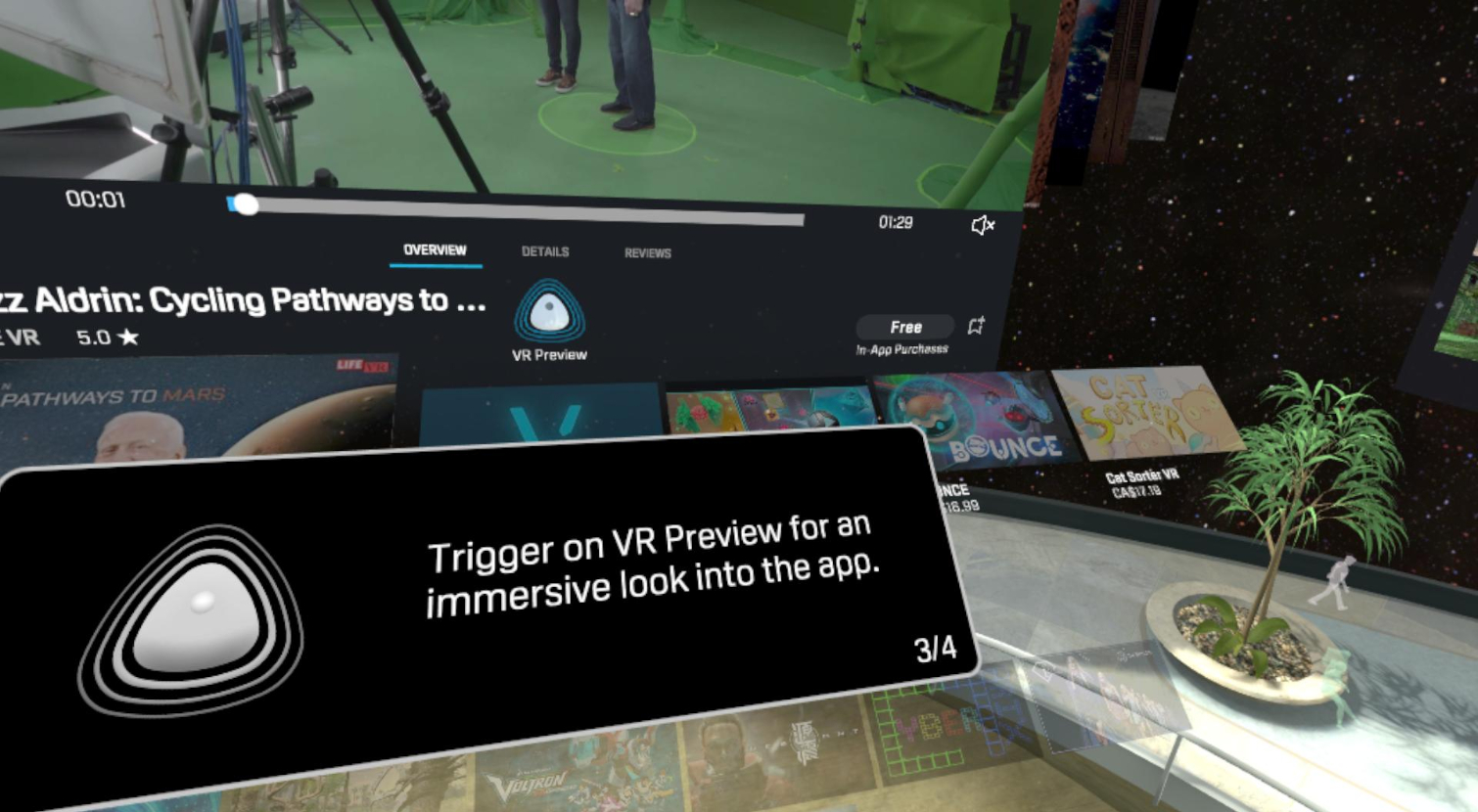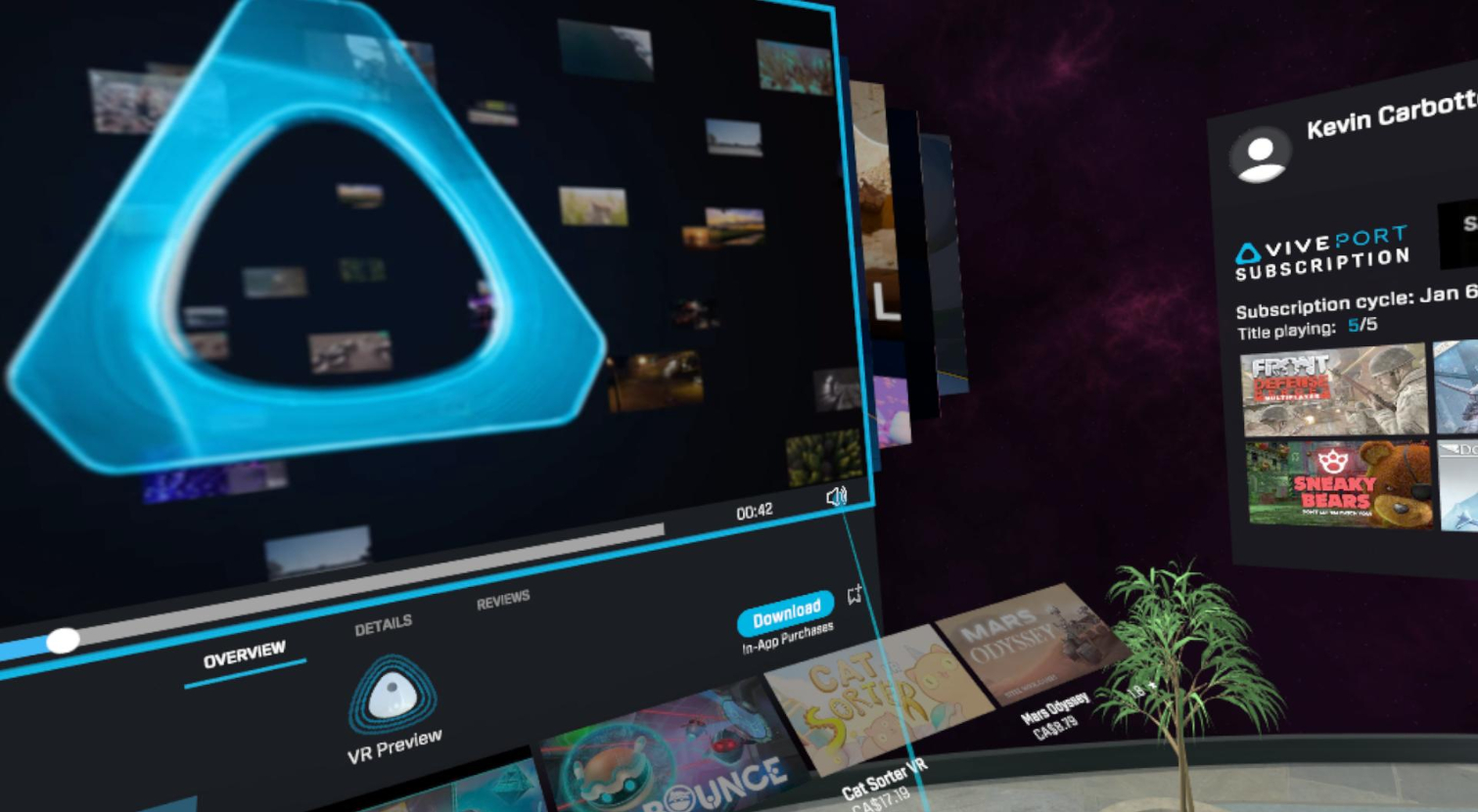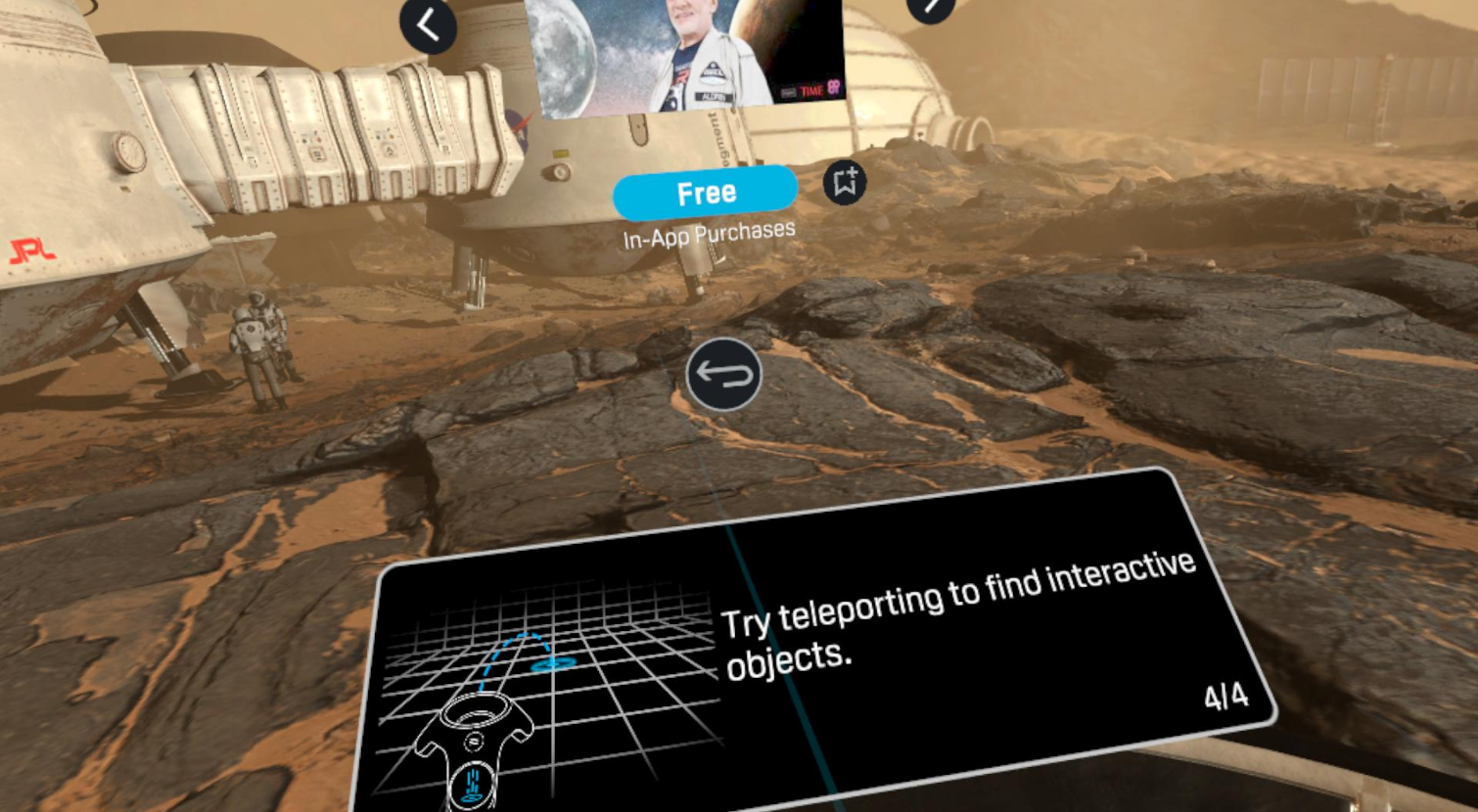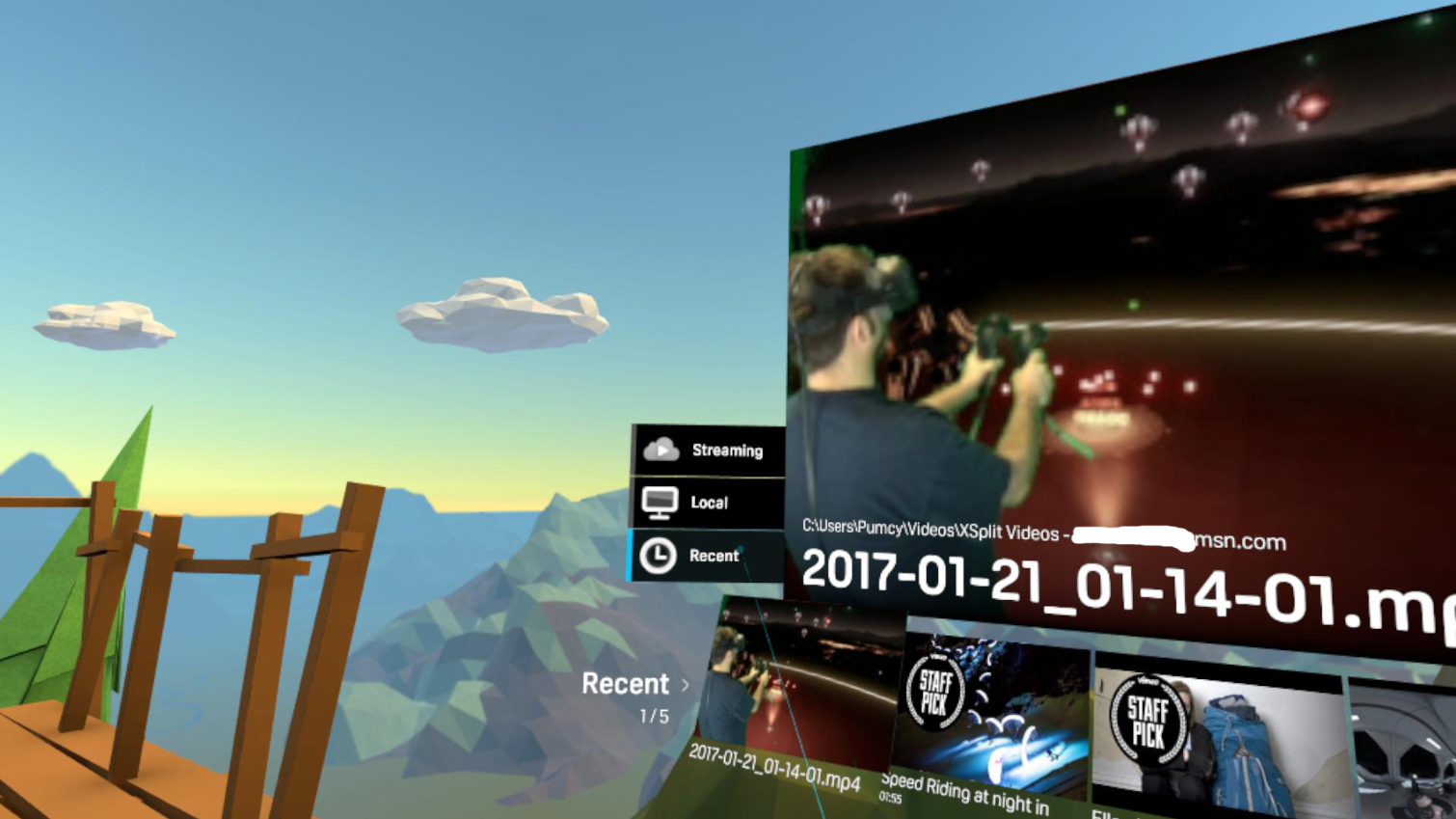Viveport VR Preview Is A Welcome Innovation, But It's Clunky (Hands On)
LAS VEGAS, NV -- This week at CES, HTC revealed what’s coming in 2018 for the Vive platform. The company announced the upscale Vive Pro, with higher resolution displays, an improved head strap system, and amplified headphones, and other tweaks and updates. It also revealed the Vive Wireless Adapter, which features Intel WiGig technology. To top it all off, the company also rolled out a new Viveport platform, with a new 3D environment from which to access your Viveport content.
“Viveport is moving to a VR first experience model, and with the all-new Viveport VR, we are changing the way consumers discover, experience and acquire VR content,” said Rikard Steiber, president, Viveport. “Until now, there has not been a shopping and browsing experience that takes advantage of the full functionality of VR. Available in early access today, Viveport VR increases interaction with content and offers developers a preview that showcases the quality of their titles and experiences.”
The new Viveport VR portal is a step away from traditional 2D, menu-based shopping environments. It offers a 3D dashboard environment with immersive content previews to give you a better idea of what to expect from a VR experience before laying down the money for it. In effect, HTC is bringing back the era of game demos, reimagined for the VR age.
HTC introduced its in-house content distribution system called Viveport in September 2016. The platform offered a path for developers in China to bring their content to the worldwide VR market, and for developers around the globe to break into the lucrative Chinese VR market. Later, HTC introduced a subscription model for the platform that lets you “rent” up to five Vive titles per month to make VR more affordable and attainable.
Indeed, HTC is doing its part in creating innovating new ways to monetize content in a way that’s fair for developers and affordable for customers. However, an idea is only as good as how well it’s executed, and to date, HTC hasn’t yet convinced us to embrace the Viveport platform. Viveport doesn’t offer as much content as you can find on Steam (though the library is growing), and it isn’t as intuitive or convenient as the Steam interface. What’s more, Viveport relies on Valve’s Steam VR drivers, so you still need to have Steam installed on your PC to use it.
When HTC revealed the changes in the new Viveport, we were excited about the prospect of having an enticing reason to use the content platform. A few months ago, Valve revamped the Steam VR home environment, and in December Oculus rolled out an early access version of its upcoming Oculus Core 2.0 software update which features a reimagined home environment and virtual dashboard. These new virtual environments introduce significant changes to how we interact with our PCs in VR. If HTC wants Viveport to succeed, it needs to, at the very least, keep up with the Joneses. The company needs its software engineers to evolve the platform with as much fervor as its hardware division has for the Vive headset.
Unfortunately, the current state of the new Viveport experience doesn’t live up to our expectations. We’d go so far to say that the new Viveport VR software is not at all ready for primetime, and HTC shouldn’t be forcing it upon its customers like this. The platform does show promise, and at the least, it’s an innovative example of a better way to distribute VR content, but it needs a lot of work. HTC may have shot itself in the foot by rolling out the new Viveport in this state.
Get Tom's Hardware's best news and in-depth reviews, straight to your inbox.
HTC describes the new Viveport as a “virtual airport” (we think spaceport would be more appropriate) that you can use as a jump-off point from which to launch immersive content. Upon entering the new Viveport environment, you’ll find yourself on a balcony overlooking a walkway below and a futuristic water-front city scape in the distance.













One of the first things about the new Viveport that struck us as odd is the lack of room-scale support in the home environment. The Vive’s primary advantage of the other headsets on the market is its support for large tracking volumes and play spaces, but HTC doesn’t highlight that strength in the Viveport environment. Valve’s updated Steam VR features a customizable home environment that you can move around within, and Oculus followed up with something similar in the Oculus Core 2.0 update. The Viveport environment features a narrow balcony space that is approximately 10 feet long that you can pace back and forth on. It does not feature customization options.
At the end of the balcony, you’ll find a start button that opens the Viveport Store and content library. HTC presents the Viveport content library in a cascading tile layout. You’ll find a large preview window directly in front of you, which displays video and image previews of the content in the store. Below the preview window, you’ll find tiles that represent the different experiences in the library. To scroll through the library, use the thumbpad on your right controller. To preview an experience, point at the tile you wish to view and pull the trigger to bring it up on the preview screen. From here, you can watch the preview videos and look at the images. And if the developer added support for the new function, you can launch a VR Preview, which gives you a glimpse of the app before buying it.
The Viveport VR Preview is a brilliant idea, and it could shape the way we purchase virtual reality content in the future. The VR Preview feature takes much of the risk out of purchasing VR content that you’ve never tried. It’s not easy to communicate what a VR experience is like to someone who’s never tried it, so what better way to sell VR games than to give people a sample before they buy? 20 years ago, PC games were marketed with shareware licenses and limited game demos. HTC is bringing that mentality back for VR.
The Viveport VR Preview lets you hop in and preview experiences to help you decide if it’s something you want to buy (which you can do from inside the preview app). Some of the VR Previews are interactive, and some of them are passive, but they all give you an idea of what you should expect from the full product. The VR Preview feature is a welcome addition to the platform, and it certainly serves to separate Viveport from other virtual dashboard environments. The VR Preview apps are tiny slivers of the full experience, so they load quickly. We’re not sure if the previews even download to your PC. The speed at which they opened led us to believe the preview content streams from a server.
The new Viveport VR Preview function is intuitive and works well, but we can’t say the same for the entire Viveport experience. We didn’t have any trouble opening apps and experiences from the Viveport portal, but we were left scratching our head trying to figure out how to close applications and return to the Viveport home environment. We pressed every button on the Vive wands, and every combination of buttons that we could think of, but none of our inputs launched a menu or closed the app. We encountered this problem while playing subscribed content, owned content, and free content; all produced the same results.
Ultimately, we had to resort to removing the Vive and closing the application with a mouse. And in doing so, the Viveport application would close entirely. In our opinion, this should have prevented HTC from releasing the software. Without an easy way to close experiences from inside the headset, Viveport isn’t all that helpful.
HTC said the current release of Viveport is an “early access” title, which is to say that the development team isn’t done with the application. HTC is still working to refine the platform, and we’re confident that the company will introduce an easy way to close VR apps and get back to the home environment. However, in the mean time, HTC has turned its regular client base into unsuspecting beta testers. The new Viveport may be an early access release, but you can’t opt out of it. HTC doesn’t offer separate release channels for stable, and early access builds.
There’s nothing wrong with releasing experimental, incomplete software for your customers to experiment with. But it’s another story altogether to force experimental software down their throats. We’re happy to see HTC pushing the envelope and trying new things in VR, but we wish the company had taken Oculus’ approach, which allows people to opt in for experimental builds.
Kevin Carbotte is a contributing writer for Tom's Hardware who primarily covers VR and AR hardware. He has been writing for us for more than four years.


